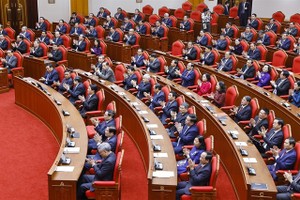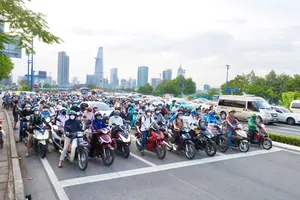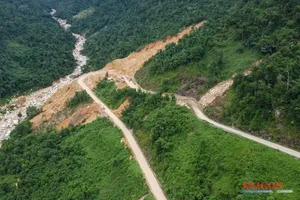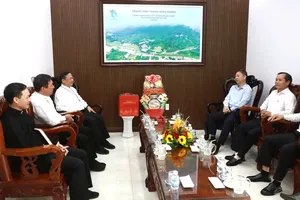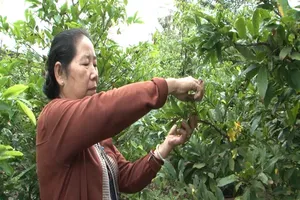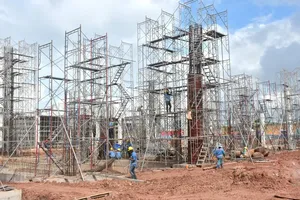
Vice Chairman of An Giang Province People’s Committee yesterday said that his province has just increased the allowed sand exploitation volume to 1.1 million cubic meters in 6 months. The sand at mine is delivered to construction sites at the price of VND79,200 per cubic meter (US$3.18).
This increased amount is only for the project to build the road connecting between National Way No.91 and Long Xuyen City Ring Road. Meanwhile, the province proposed that the My Thuan Project Management Board cooperate with related units to strictly monitor sand exploitation and distribution to this project.
Compared to the above regulated sand price, the normal price in the market is much higher by 5 times per cubic meter for sand delivered to construction sites. Despite such an expensive price, the sand supply is not sufficient to satisfy the building demands, leading to a wide-scaled thirst for this material.
Director Tran Van Hung of Tra Vinh Province Department of Natural Resources and Environment shared that there is only one possible river sand mine in the province, which will be expired in March 2023, along with one sea sand mine. One more is waiting for exploitation permit to mostly serve the demands of Dai Ngai Bridge and Co Chien Industrial Park construction projects.
In spite of such a high need for construction sand from 2021-2025, up to 39 million cubic meters, the exploitation and supply of this material in the Mekong Delta is rather limited. It is taken mainly from the river mine in the downstream of Tien River and Hau River (passing the provinces of Vinh Long, Ben Tre, Tra Vinh, Soc Trang and Can Tho City). The total available river sand at present is at 23 million cubic meters, with an exploitation capacity of 5.7 million cubic meter a year.
The calculated sand reserve in those mines is still high, yet the quality is not satisfying enough for surface leveling purposes to build roads. Meanwhile, in the mines along the upstream of Tien River and Hau River (passing the provinces of An Giang and Dong Thap), the total available river sand is quite similar to the one of the downstream provinces, with an exploitation capacity of 7.5 million cubic meter a year.
A sand shortage leads to the first immediate result of illegal exploitation. In Tien Giang Province, since the beginning of this year, 79 such cases have been detected, where exploiters could display no valid permit or sand transportation approval.
In Vinh Chau Town of Soc Trang Province, there is even a group of law breakers boldly use various devices and machines to illegally mine tens of thousands of cubic meters of underground sand (As reported by SGGP News).
While provinces in the Mekong Delta are still struggling to find sand sources and prioritizing this material for key projects, in An Giang province, many businesses are now importing sand from Cambodia. According to Vice Chairman Tran Anh Thu of An Giang Province People’s Committee, this action has happened for many years, and the permit is by the Ministry of Industry and Trade, the Ministry of Natural Resources and Environment.
The Customs Office of Vinh Xuong International Border Gate reported that there are now 11 businesses importing 2.5 million cubic meters of sand through this gate. The retail sand price in Cambodia is $6 per cubic meter. After being imported, this volume bear 10 percent value added tax.
Owner of a sand importation company shared that from 2009, Cambodia closed its sand mines to prevent the exportation of this material. At the beginning of this year, this exportation is allowed again to Vietnam with a limited volume. The imported sand is yellow, which is at the highest quality. The retailed price ranges from VND170,000-280,000 per cubic meter ($6.84-11.26) depending on the size of a sand particle. After including service and shipping fees, it comes to VND320,000-370,000 ($12.87-14.88).
The Transport Ministry is working with the Natural Resources and Environment Ministry, the Construction Ministry, the Agriculture and Rural Development Ministry to switch to sea sand in traffic construction projects after careful investigation of potential influences of this measure to the environment, along with the introduction of standards, building processes, and unit price. If all are well and the pilot is successful, this use will be applied nationwide from the end of 2023. This means at present, river sand is still the main material for construction sites.


